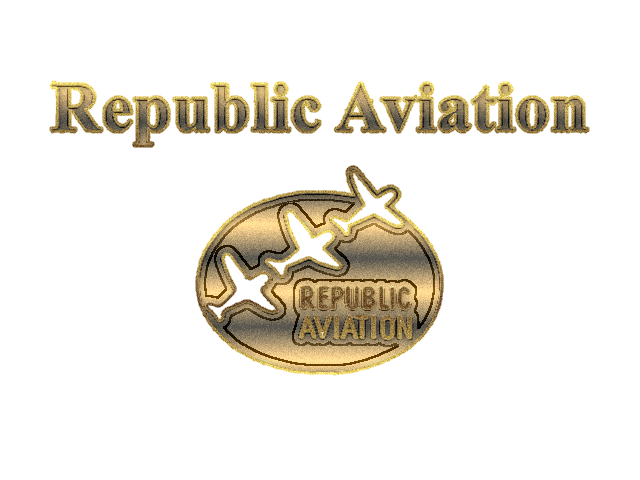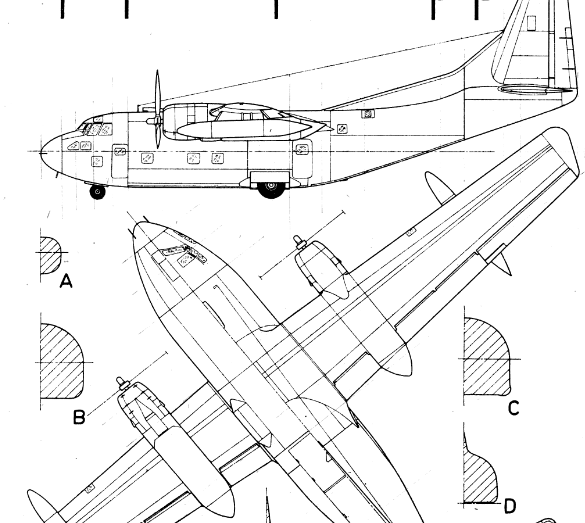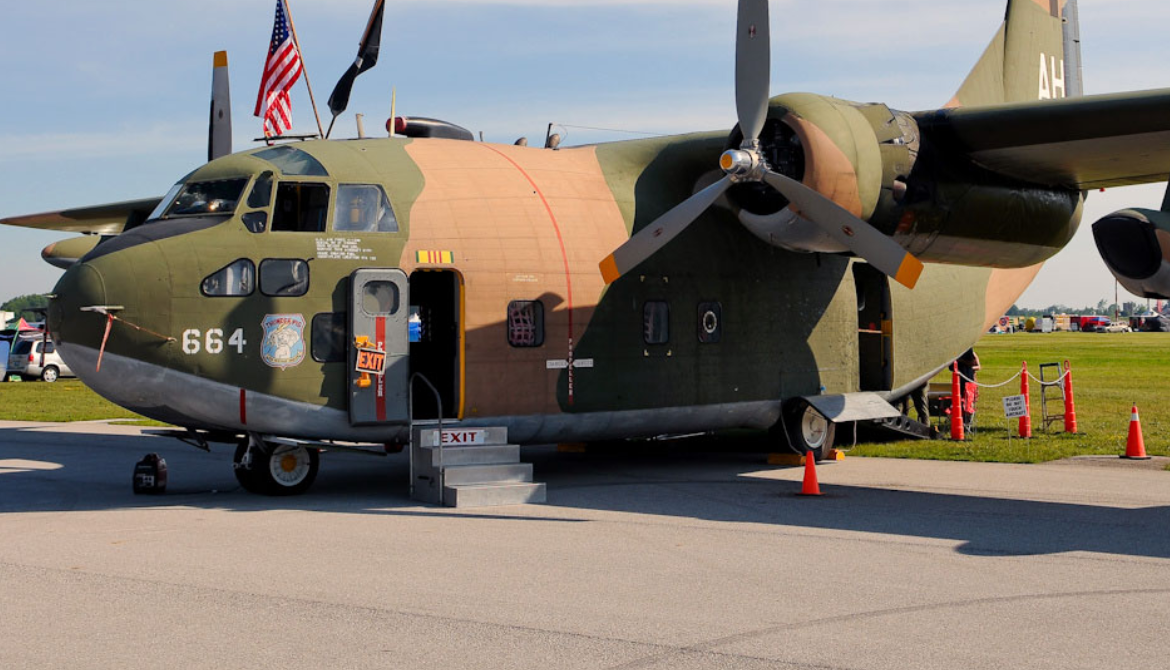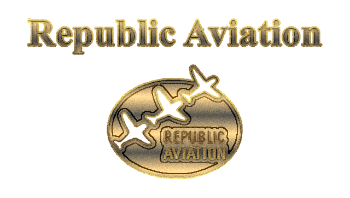Fairchild
C-123 Provider
|
|||||||
|---|---|---|---|---|---|---|---|
| National origin | United States | ||||||
| Manufacturer | Chase Aircraft Fairchild Aircraft |
||||||
| First flight | 14 October 1949 | ||||||
| Introduction | 1956 | ||||||
| Retired | 1995 (Royal Thai Air Force) | ||||||
| Primary users | United States Air Force (historical) United States Coast Guard (historical) South Vietnam Air Force (historical) |
||||||
| Produced | 1949–1970 | ||||||
| Number built | 307 | ||||||
| Developed from | Chase XCG-20 | ||||||
| Variants | Chase XC-123A Stroukoff YC-134 |
||||||
.
History Republic Aviation Corporation.
Fairchild C-123 Provider
First flight 14 October 1949
Produced 1949–1970

The Fairchild C-123 Provider is an American military transport aircraft designed by Chase Aircraft and built by Fairchild Aircraft for the U.S. Air Force. In addition to its USAF service, which included later service with the Air Force Reserve and the Air National Guard, it went on to serve the U.S. Coast Guard and various air forces in Southeast Asia. During the War in Vietnam, the C-123 was used to deliver supplies, to evacuate the wounded, for agent insertions behind enemy lines, and was also used to spray Agent Orange.
The C-123 Provider was designed originally as an assault glider aircraft for the United States Air Force (USAF) by Chase Aircraft as the XCG-20 (Chase designation MS-8 Avitruc) Two powered variants of the XCG-20 were developed during the early 1950s, as the XC-123 and XC-123A. The only difference were the class of engines used. The XC-123 used two Pratt & Whitney R-2800-23 air-cooled radial piston engines, while the XC-123A was fitted with four General Electric J47-GE-11 turbojets, in two pods
Operational history
This section needs additional citations for verification. Please help improve this article by adding citations to reliable sources in this section. Unsourced material may be challenged and removed. (March 2019) The first recipients of C-123 aircraft were USAF transport units, soon followed by the U.S. Coast Guard (USCG) which used the aircraft for search and rescue (SAR) missions, and even the U.S. Air Force Demonstration Team, the "Thunderbirds," used C-123s for a time as a logistics support aircraft for transporting the team's ground crews and equipment. The type would also be widely exported under various U.S. military assistance programs, directly from USAF stocks. A C-123 was used to transport President John F. Kennedy's limousine during his November, 1963, Texas tour.

USAF C-123Bs in the 1950s. The C-123 was nearly ignored by the USAF for service in Vietnam, but a political rivalry with the U.S. Army and the Army's use of the CV-2 Caribou and later pre-production order for the de Havilland Canada C-8 Buffalo, led to a decision to deploy C-123s there. To compete with the well-performing CV-2, the USAF and Fairchild furthered development on the C-123 to allow it to do similar work on short runways. This additional development increased the utility of the aircraft and its variants to allow it to perform a number of unique tasks, including the HC-123B which operated with the USCG fitted with additional radar equipment for search and rescue missions through 1971, and the C-123J which was fitted with retractable skis for operations in Greenland and Alaska on compacted snow runways.

A Ranch Hand UC-123B over Vietnam in 1962. 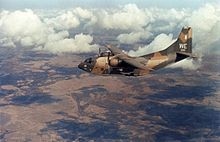
A 19th ACS C-123K over the Mekong Delta, 1969. By 1962, the C-123K variant aircraft was evaluated for operations in Southeast Asia and their stellar performance led the Air Force to upgrade 180 of the C-123B aircraft to the new C-123K standard, which featured auxiliary jet pods underneath the wings, and anti-skid brakes. In 1968, the aircraft helped resupply troops in Khe Sanh,
0
KmCeiling
0
KmCombat RANGE
0
Km/hAircraft Speed
0
Max Crew
Photo Gallery
Republic Aviation Corporation.
Fairchild C-123 Provider
First flight 14 October 1949
Produced 1949–1970


Republic Aviation Corporation. Originally known as the Seversky Aircraft Company
Fairchild C-123 Provider
General Info
-
-
- Crew: 4
- Capacity: 60 passengers, 50 litters, or (11,000 kg) of cargo
- Length: 76 ft 3 in (23.24 m)
- Wingspan: 110 ft 0 in (33.53 m)
- Height: 34 ft 1 in (10.39 m)
- Wing area: 1,223 sq ft (113.6 m2)
-
Powerplant
-
- Empty weight: (16,042 kg)
- Gross weight: (23,394 kg)
- Max takeoff weight: (27,216 kg)
- Fuel capacity: 1,462 US gal (1,217 imp gal; 5,530 L) internal + 2x 450 US gal (370 imp gal; 1,700 L) underwing drop-tanks
- Powerplant: 2 × Pratt & Whitney R-2800-99W Double Wasp 18-cylinder air-cooled radial piston engines, 2,500 hp (1,900 kW) each
- Powerplant: 2 × General Electric J85-GE-17 turbojet engines, 2,850 lbf (12.7 kN) thrust each
-
Performance
- Maximum speed: 228 mph (367 km/h, 198 kn) at (3,048 m)
- Cruise speed: 173 mph (278 km/h, 150 kn) maximum at 10,000 ft (3,048 m)
- Stall speed: 95 mph (153 km/h, 83 kn) flaps and undercarriage down
- Range: 1,035 mi (1,666 km, 899 nmi) with maximum payload
- Ferry range: 3,280 mi (5,280 km, 2,850 nmi) with 2x 500 US gal (420 imp gal; 1,900 L) "Benson" auxiliary tanks
- Service ceiling: 21,100 ft (6,400 m) with one engine inoperative
Armament
-
- Chase XCG-20
- Chase XC-123A
- Stroukoff YC-134
Aircraft of comparable role, configuration, and era
Links to Youtube & Others
In 2011, a retired Air Force officer, Major Wesley T. Carter, filed a complaint with the Air Force Inspector General alleging that the Air Force knew that UC-123Ks used for spraying Agent Orange in Vietnam remained contaminated and that the Air Force had failed to properly inform subsequent flight crews of the risks following their transfer to the Air Force Reserve
Fairchild
C-123 Provider
Another NC-123B was used as a radio relay aircraft over the Ho Chi Minh trail, with equipment to read the signals from various sensors on the ground designed to pick up enemy truck activity.
Youtube Link
Another NC-123B was used as a radio relay aircraft over the Ho Chi Minh trail, with equipment to read the signals from various sensors on the ground designed to pick up enemy truck activity.
